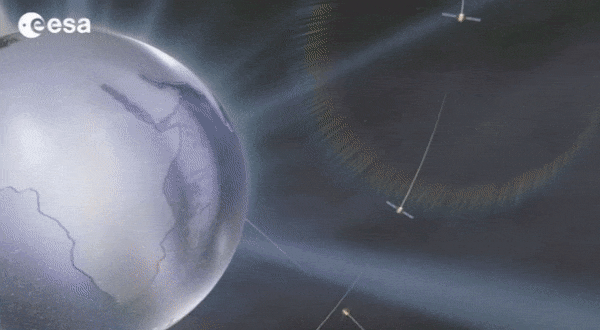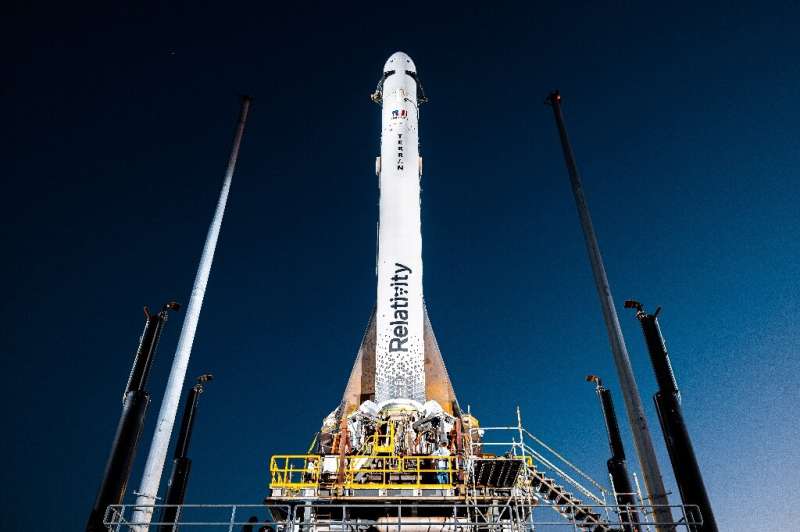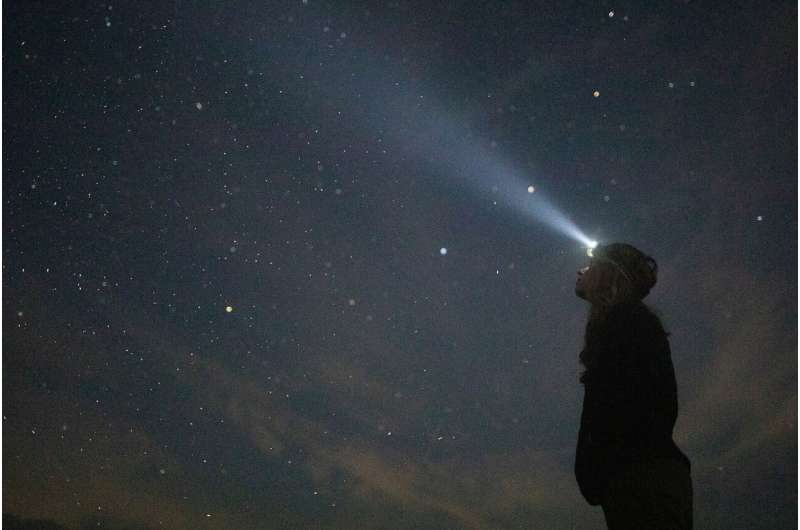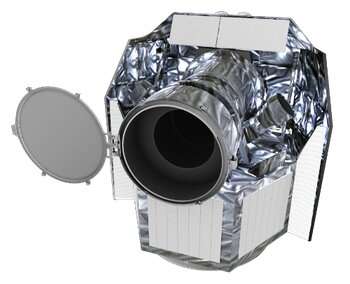
Copernical Team
Private firm to launch maiden rocket flight in Spain
 A micro rocket built by a Spanish company will lift off within several weeks, Prime Minister Pedro Sanchez said on Saturday, a first for Spain as a space race hots up in Europe.
"This rocket, when it is launched, we Spaniards we will all watch it on television and I know that when, within several weeks MIURA1 will begin its journey, the devotion and hard work of many people ... will have bee
A micro rocket built by a Spanish company will lift off within several weeks, Prime Minister Pedro Sanchez said on Saturday, a first for Spain as a space race hots up in Europe.
"This rocket, when it is launched, we Spaniards we will all watch it on television and I know that when, within several weeks MIURA1 will begin its journey, the devotion and hard work of many people ... will have bee Asteroid has slim chance of collision course with Earth in 2046
 An asteroid about the size of an Olympic swimming pool has a "very small chance" of smashing into Earth when the giant space rock streaks through the solar system in 23 years.
Scientists expect the giant rock to hurtle into Earth's path on Feb. 14, 2046, in what will most likely be a close encounter rather than a direct impact.
The asteroid was discovered Feb. 26 by astronomers a
An asteroid about the size of an Olympic swimming pool has a "very small chance" of smashing into Earth when the giant space rock streaks through the solar system in 23 years.
Scientists expect the giant rock to hurtle into Earth's path on Feb. 14, 2046, in what will most likely be a close encounter rather than a direct impact.
The asteroid was discovered Feb. 26 by astronomers a Launch of world's first 3D-printed rocket canceled at last second
 The launch of the world's first 3D-printed rocket was ultimately scrubbed after several tries on Saturday, marking a new setback for the private owner of an innovative spacecraft billed as being less costly to produce and fly.
Engines had begun igniting on the unmanned Terran 1 rocket, built by California aerospace startup Relativity Space, when an "automation" issue caused the company to ab
The launch of the world's first 3D-printed rocket was ultimately scrubbed after several tries on Saturday, marking a new setback for the private owner of an innovative spacecraft billed as being less costly to produce and fly.
Engines had begun igniting on the unmanned Terran 1 rocket, built by California aerospace startup Relativity Space, when an "automation" issue caused the company to ab Earth from Space: Graham Coast, Antarctica
 Image:
The icy landscape of Graham Coast, which lies on the west side of the Antarctic Peninsula, is featured in this Copernicus Sentinel-2 image.
Image:
The icy landscape of Graham Coast, which lies on the west side of the Antarctic Peninsula, is featured in this Copernicus Sentinel-2 image. Inspiring mocktail menu served up by Space Juice winners

An impressive 70 mocktail recipes representing a wide range of flavours of ESA’s Jupiter Icy Moons Explorer (Juice) mission were submitted to the Agency’s #SpaceJuice competition in January.
Galileo: no way without time

Europe’s Galileo is the world’s most precise satellite navigation system, providing metre-level accuracy and very precise timing to its four billion users. An essential ingredient to ensure this stays the case are the atomic clocks aboard each satellite, delivering pinpoint timekeeping that is maintained to a few billionths of a second. These clocks are called atomic because their ‘ticks’ come from ultra-rapid, ultra-stable oscillation of atoms between different energy states. Sustaining this performance demands, in turn, even more accurate clocks down on the ground to keep the satellites synchronised and ensure stability of time and positioning for
World's first 3D printed rocket set for inaugural flight

The world's first 3D printed rocket is scheduled to blast off from Florida on Saturday on the maiden flight of an innovative spacecraft billed as being less costly to produce and fly.
Liftoff of the rocket, Terran 1, had been scheduled for Wednesday at Cape Canaveral but was postponed at the last minute because of propellant temperature issues.
The new launch window for the rocket built by California aerospace startup Relativity Space to put satellites into orbit is from 1:00 pm to 4:00 pm (1800 GMT to 2100 GMT) on Saturday.
Terran 1 is set to reach low Earth orbit eight minutes after blastoff on a voyage intended to gather data and demonstrate that it can withstand the rigors of liftoff and space flight.
Scientists call for global push to eliminate space junk

Scientists have called for a legally binding treaty to ensure Earth's orbit isn't irreparably harmed by the future expansion of the global space industry.
In the week that nearly 200 countries agreed to a treaty to protect the high seas after a 20-year process, the experts believe society needs to take the lessons learned from one part of our planet to another.
The number of satellites in orbit is expected to increase from 9,000 today to over 60,000 by 2030, with estimates suggesting there are already more than 100 trillion untracked pieces of old satellites circling the planet.
While such technology is used to provide a huge range of social and environmental benefits, there are fears the predicted growth of the industry could make large parts of Earth's orbit unusable.
An international collaboration of experts in fields including satellite technology and ocean plastic pollution say this demonstrates the urgent need for global consensus on how best to govern Earth's orbit.
CHEOPS mission extended

After more than three years in orbit, the mission of the CHEOPS space telescope has just been extended. Led by the University of Bern in collaboration with the University of Geneva, CHEOPS is a joint mission of the European Space Agency (ESA) and Switzerland.
On March 7th, ESA's Science Programme Committee has confirmed its continued operations to 2026 and an indicative extension to 2029, contingent upon ongoing commitments from national contributors and partners. Since its launch in December 2019, the satellite's extremely precise measurements have contributed to several key discoveries in the field of exoplanets. The extension will make it possible to study these fascinating worlds around other stars in even more detail.
NASA to reveal crew members in April for flight around Moon

NASA will announce the names next month of the four astronauts—three Americans and one Canadian—who will fly around the Moon next year, the head of the US space agency said Thursday.
NASA administrator Bill Nelson said the crew members of the mission known as Artemis 2 would be revealed on April 3.
"Astronauts—three from America and one from Canada—will fly around the moon and they'll test NASA's Space Launch System, which is our rocket, and the spacecraft called Orion," Nelson said.
The first Artemis mission wrapped up in December with an uncrewed Orion capsule returning safely to Earth after a 25-day journey around the Moon.
Artemis 2, scheduled to take place in late November 2024, will take a four-person crew around the Moon but without landing on it.
The ambitious program aims to return humans to the Moon for the first time since the historic Apollo missions ended in 1972.

